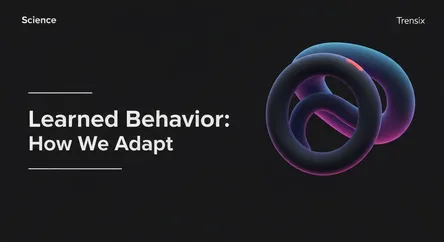Science
Learned Behavior: How We Adapt

Discover learned behavior, the actions and responses we acquire through experience. Explore how humans and animals adapt, form habits, and learn skills.
What is it?
Learned behavior is a change in an organism's behavior resulting from experience. Unlike innate behaviors, which are genetically determined instincts, learned behaviors are acquired, modified, and allow for adaptation to changing environments. Major types include classical conditioning, where an association is formed between two stimuli (like Pavlov's dogs salivating at a bell), and operant conditioning, where behavior is shaped by rewards or punishments. Other forms are imprinting, where a young animal forms an attachment to another individual, and habituation, which is a decreased response to a repeated stimulus.
Why is it trending?
The concept is a cornerstone of the timeless 'nature vs. nurture' debate in psychology and biology. It's also seeing a resurgence in discussions about artificial intelligence and machine learning, where algorithms are programmed to learn from data in a way that mimics organic learning. Viral videos of pets and wildlife performing complex, trained tasks constantly spark public curiosity, driving searches that seek to understand the science behind how animals—and humans—learn. This intersection of science, technology, and pop culture keeps the topic perennially relevant.
How does it affect people?
Learned behavior is fundamental to human existence. It's how we acquire language, cultural norms, and all our education and skills, from walking to complex problem-solving. Our habits, fears, beliefs, and social behaviors are all products of learning. This principle is the basis for many therapeutic approaches, like cognitive-behavioral therapy (CBT), which helps people unlearn negative patterns and develop healthier responses. Understanding how we learn is therefore crucial for personal growth, effective parenting, and education, enabling us to shape our own actions and lives.